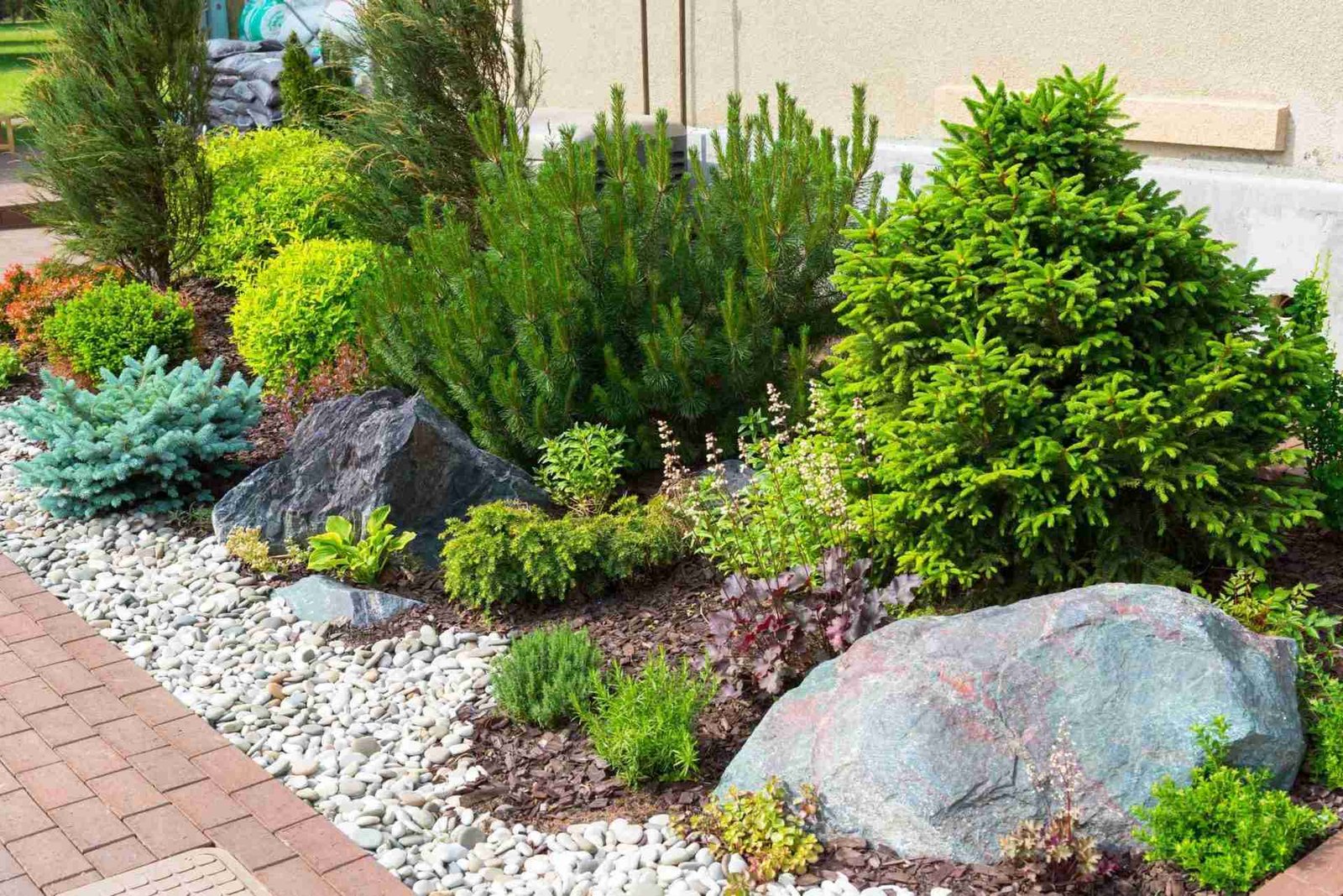It can be hard to make time for mundane household chores in an impossibly busy world. After all, the very last thing that a busy professional wants to do after a long workday is worry about the state of our homes, yards, or gardens. We would rather spend our hard-earned weekends traveling, spending time with friends, or relaxing in front of the TV – not out in the hot summer sun weeding our flower beds!
However, just because we don’t want to dedicate our time to these outdoor chores doesn’t mean that we don’t want our homes to look nice. And while many people elect to hire a professional landscaper (or the kid next door for $20 and a lemonade), that simply isn’t in the cards (or the budget) for everyone.
Fortunately, there are many low-maintenance, budget-friendly landscaping hacks and ideas that we can employ to keep our yards looking beautiful. This allows us to maintain our hard-earned free time without sacrificing the beauty of our outdoor spaces. Here are nine of our favorite low-maintenance landscaping ideas for front yards.
1. Make Mulch Your New Best Friend
Mulch is often used for decorative purposes, hence why it comes in so many different colors, shapes, and textures. But its true value, especially for the lazy landscaper, is so much more substantial. Not only does mulch keep your flower beds looking clean and well-manicured, but it also helps to suppress weed growth in your gardens and flower beds. This is a HUGE time-saver, significantly reducing the frequency you’ll have to weed the beds themselves.
In addition, mulch reduces water evaporation from the soil. This means that soil is actually able to retain moisture for longer periods, letting you “off the hook” for constant watering. Mulch is incredibly affordable and only has to be replaced once per year (maybe twice in warmer climates).
2. Automate Your Irrigation
A common complaint among homeowners, especially those who live in hot, humid, or dry climates, is that they constantly have to water their plants or lawn. While this may not seem like an inherently difficult chore, it can certainly be time-consuming, especially for those with larger properties. And don’t even get us started on how irritating a kinked hose can be!
Automating your irrigation process can be a simple and cost-effective way to solve this problem. For starters, consider purchasing an automatic sprinkler system for your lawn. This is not your momma’s sprinkler system either – modern systems can be set to operate on a timer for ease of use, and many of the higher-end models can connect directly to your iPhone!
In addition to significantly reducing your workload, an automated sprinkler system takes the guesswork out of watering. Many modern systems are designed to measure the moisture in your yard before watering so your lawn won’t be drowned or overwatered. In addition, flower beds and gardens can also be equipped with automatic irrigation systems, allowing you to cross “watering the lawn” off your to-do list for good.
3. Trade Turf for Pretty Planting Beds
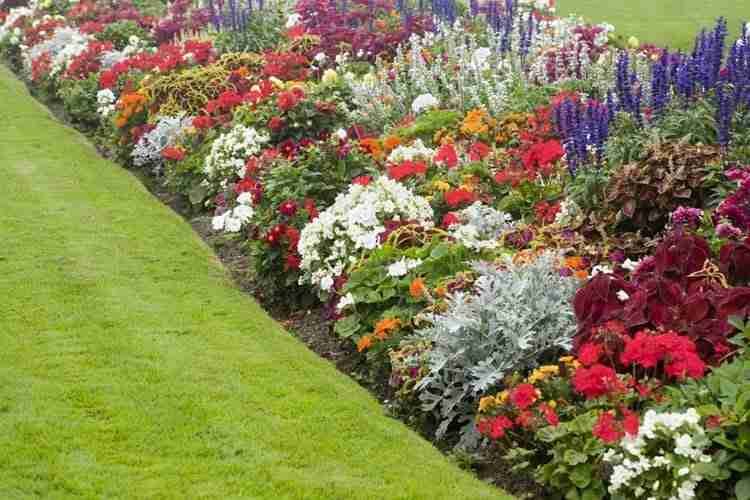
If mowing the lawn is your biggest landscaping-related stressor, consider trading in traditional turf for planting beds. There are several reasons that this can be beneficial. For starters, the majority of your planting bed will already be covered with soil (one more hat-tip to our good friend mulch). This alone cuts out a large square footage of your yard that would otherwise require upkeep.
To decorate your planting bed (unless you prefer the aesthetic look of dirt), several great low-maintenance plant options are available, from hydrangeas to perennials. And if flowers aren’t your thing, consider installing a blend of shrubs or small trees whose only maintenance is routine trimming and shaping.
4. Fill Your Plant Bed With Succulents
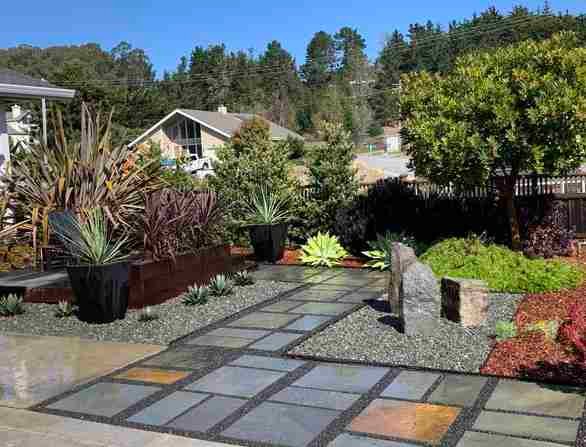
If traditional plants, flowers, or shrubs don’t suit you, consider filling your front yard with a variety of succulents. These dessert-bound beauties are incredibly low-maintenance – they thrive when left alone! An excellent choice for those in warmer climates, the succulent is often referred to as a drought-resistant plant and can actually be damaged by overwatering. Succulents store water in their leaves and, while they can’t be forgotten entirely, only require watering every few days.
5. Invest in Artificial
If the thought of mowing your lawn every other week sounds absolutely exhausting, consider investing in artificial grass. While not inexpensive, artificial turf can keep your property looking clean-cut and beautiful year-round without requiring massive amounts of upkeep. Nowadays, artificial turf comes in a variety of colors, densities, and lengths. The best part? Artificial turf has a life expectancy of eight to ten years, meaning that you just might get away with “mowing the lawn” once every decade. Now THAT is a real time-saver.
6. Try Something New with Hardscaping
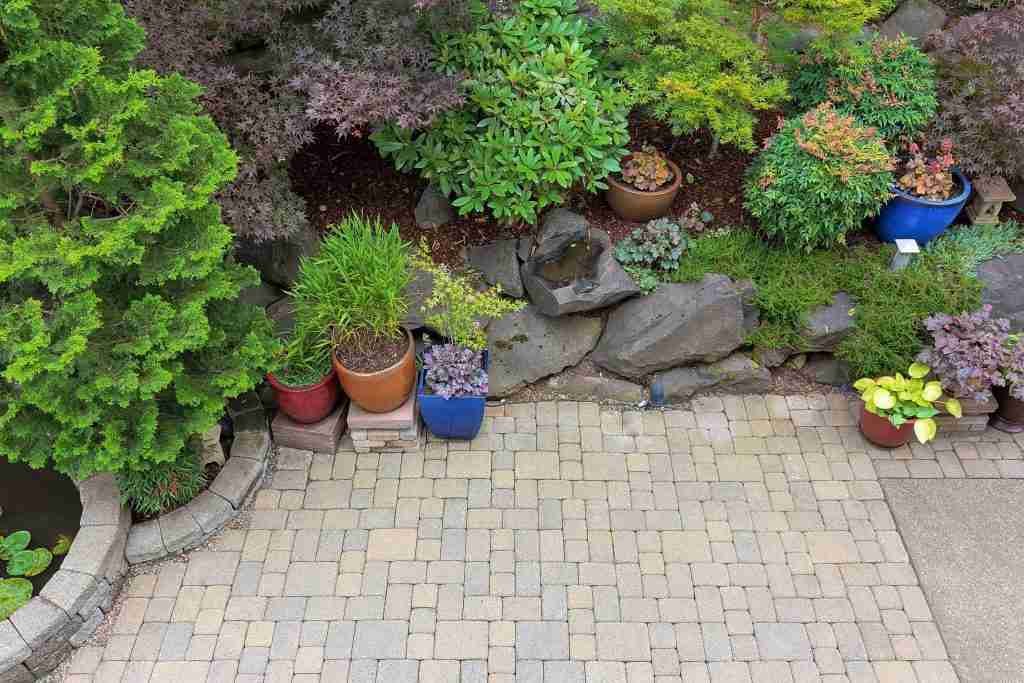
Industrial decor has exploded in popularity over the years. A go-to choice for many designers, bold elements such as concrete, slate, and stone are now rolling their way into the landscaping niche as well (no pun intended). Many homeowners have chosen to ditch traditional greenery for a more urban design choice by replacing their lawns and gardens with hard surfaces such as cement or stone.
And while this is traditionally done in the backyard (integrating with a porch or patio), many are now choosing to bring this bold style choice around to the front yard as well. Using pavers, bricks, or decorative stones, hardscapers are making their yards stand out and kissing their grass goodbye. As a bonus? Hardscaping is incredibly low-maintenance since the majority of your design elements only need to be replaced when worn or damaged.
7. Xeriscaping: Fighting Pollution and Drought
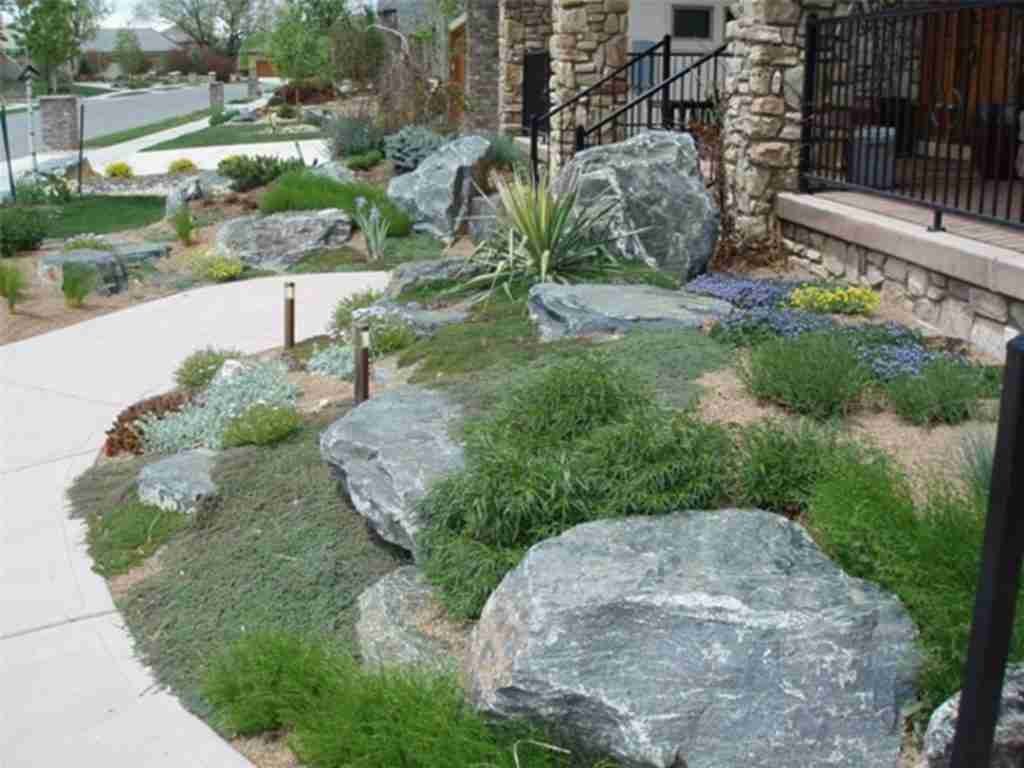
A new trend in the landscaping community, xeriscaping is a form of landscaping specifically designed to reduce water use and waste. Inspired by the Greek word “xeros,” meaning “dry,” this term literally translates to “dry landscape.” While designed to benefit the planet and reduce our carbon footprint, xeriscaping has several key elements that are great for the busy homeowner.
For starters, a fundamental concept of xeriscaping is the replacement (or reduction) of lawn grass areas. Not only is lawn grass one of the biggest enemies of water conservation, but it is also a major burden for busy homeowners. To replace lawn grass areas, xeriscapers will opt for the use of native plants that are already adapted to their own climate and, therefore, require less physical watering and maintenance.
Another key element of xeriscaping is grouping plants that require routine watering in an area together. This reduces water waste while simultaneously reducing your effort. After all, there is no need to walk around the entire yard searching for plants to water when they are all together in one place!
8. Create Outdoor Living Spaces
Creating an outdoor living space in the front yard is a great way to reduce your landscaping load. A concept already popular in the rear of many homes, outdoor living spaces can be beneficial for many reasons. For starters, they afford homeowners the opportunity to enjoy (and spend time in) their front yard. Instead of being an area of your property that is often overlooked, your front yard can be transformed into an ultimate relaxation oasis with the addition of hardscaped elements such as brick, stone, and cement.
Add on a seating area, a grill or fire pit, and your closest friends, and you will have managed to create a go-to hangout spot for you and your loved ones. In addition to creating a space for connection, the addition of an outdoor living space in the front yard decreases your lawncare chores. And as a bonus, this type of space presents an excellent opportunity to meet and get to know your neighbors!
9. When in Doubt, Let it Grow
If you feel that spending each weekend tending to your lawn and garden sounds exhausting and unrealistic, you’re not alone. Many homeowners are making the choice to abandon traditional landscaping ideals by letting their lawns, flowers, and plants do what they were made to do – grow. Many studies suggest that over-taming outdoor spaces can be detrimental to the environment. After all, many synthetic lawncare products end up in a landfill eventually.
There is also an argument to suggest that many of the artificial chemicals used in routine landscaping may end up back in the water supply. While homeowners should be attentive to their HOA’s lawncare requirements to avoid a fine, much of our time can be saved by simply letting nature do its thing and allowing our outdoor spaces to grow.
Low Maintenance Landscaping Can Be a Reality
While there are a great many upsides to home ownership, landscaping, for many, does not make the list. Fortunately, by implementing a few small changes to your front yard, you can maintain a relaxing and enjoyable space without the headache of outdoor maintenance. Hold on to your hard-earned free time and spend it doing what you enjoy instead of stressing over the state of your outdoor space by using one (or more) of these nine low-maintenance landscaping ideas for front yards.
If you need help implementing these ideas into your yard, consider hiring an affordable online landscape design service. They’ll provide you with an exact design blueprint and list of plants and materials to buy. Simply hand off the plans to a local landscaping company and you’re done!

